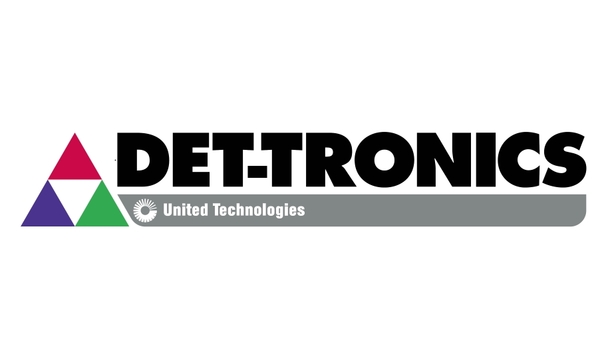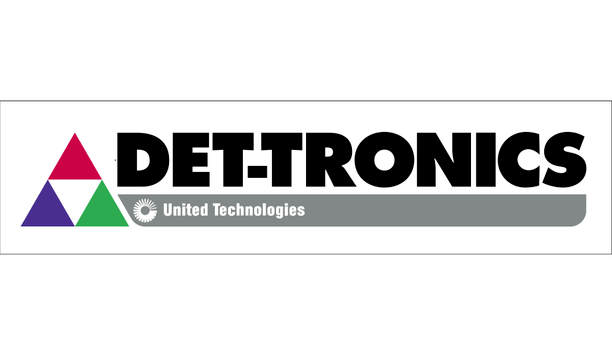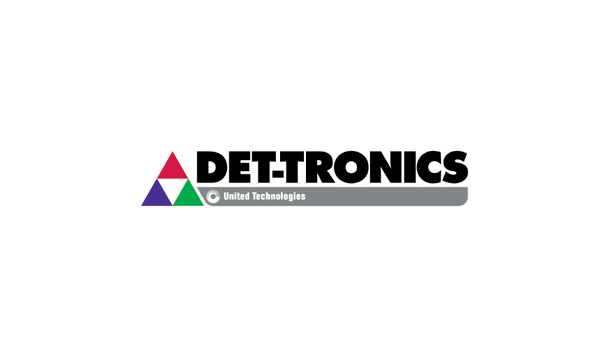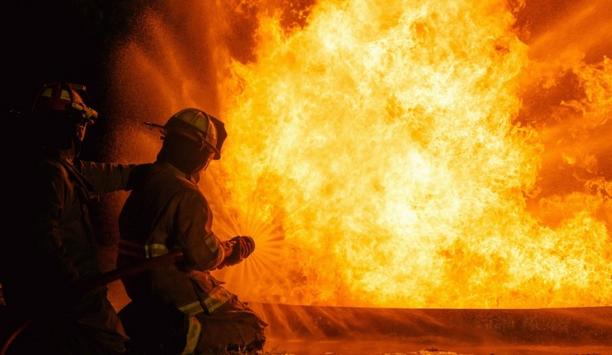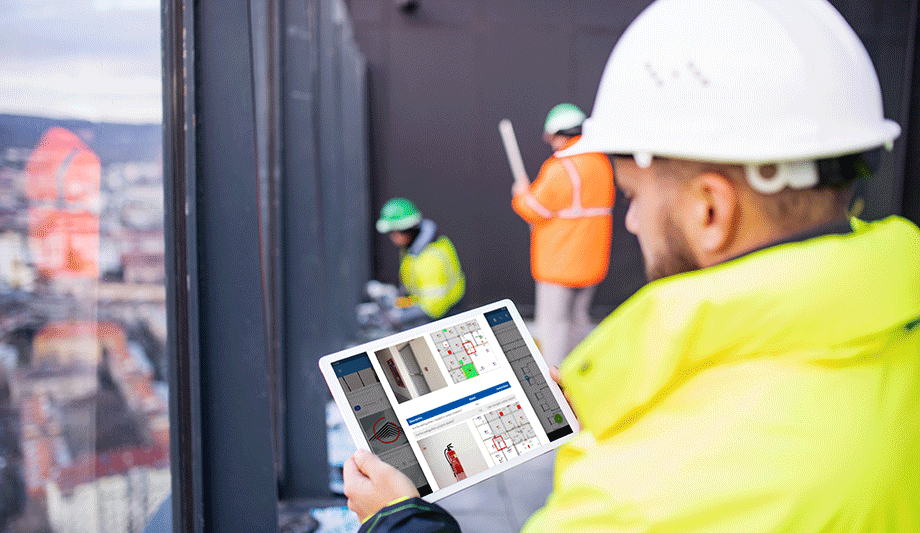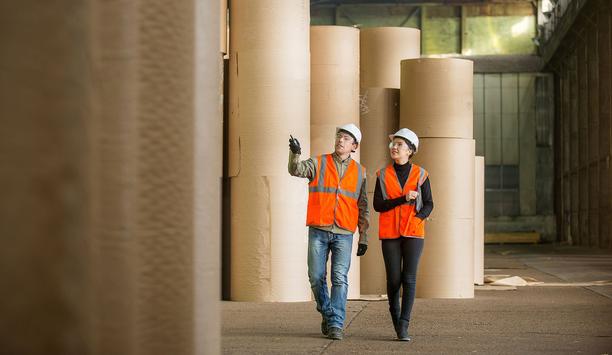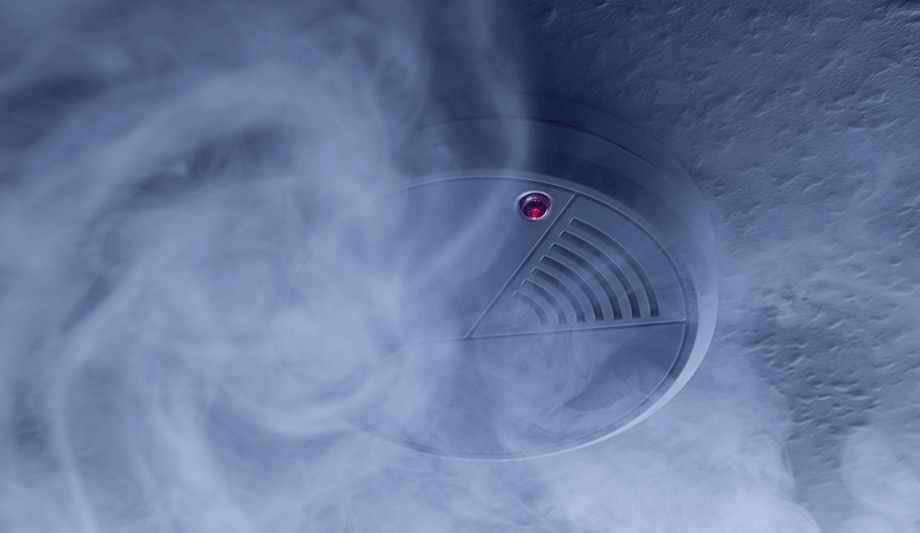Detector Electronics Corporation (Det-Tronics) - Experts & Thought Leaders
Latest Detector Electronics Corporation (Det-Tronics) news & announcements
AAR MRO Services supports airline operators with everything from maintenance inspections and equipment upgrades to airframe painting and heavy maintenance for all major aircraft in service. The largest MRO operator of its type in the Americas, AAR recently opened the company’s largest facility, located at the Chicago Rockford International Airport. Here, each of two 10-story hangar bays can accommodate hundreds of ‘small’ aircraft, two Boeing 787s or even an Airbus A380, the largest commercial aircraft in production today. Also in each of the two bays are 10 Det-Tronics optical flame detectors that function as the critical sensors for the AAR hangar’s fire protection system. Heavy Maintenance Inspections Aircraft spend anywhere from three days to two months in AAR’s hangars Russel Daubert, AAR Rockford’s Facility Manager, and Chris Wolf, Director of Maintenance, have overseen the 24-hour operations at the MRO hangar since it opened in late 2016. AAR serves multiple airline customers, and like any MRO facility, Wolf says their goal is to “get lines that are current, which means an airline operator will continually bring in one plane after another to keep their fleet operating safely.” Daubert adds, “The biggest portion of our work is airframe overhauls and heavy maintenance inspections, and depending on the aircraft, we can have up to 225 aircraft in each hangar at one time plus 50 to 60 crew.” Aircraft spend anywhere from three days to two months in AAR’s hangars. Fire protection in MRO hangars must be able to handle the challenges associated with servicing aircraft. Conventionally Constructed Fire Hangars According to Wolf, aircraft bring inherent fire hazards to MRO facilities. “These aircraft come in with 70,000 to 80,000 pounds of fuel,” Wolf says. “Add the oxygen tanks on board for passenger and crew safety, plus the possible sparks from electrical equipment or other sources, and you have all the ingredients needed for fire.” Maintenance also involves painting aircraft in the hangars, which can result in the circulation of highly flammable paint plumes under and around wings and fuselage. Hangars in these groups usually require both sprinklers and foam for fire protection Fire protection standards specific to aircraft hangars are spelled out in the National Fire Protection Association’s NFPA® 409 Standard on Aircraft Hangars. This document classifies hangars by size and construction type; conventionally constructed fire hangars with fire areas of 40,000 sq. ft. or less are classified in Groups I, II and III. Hangars in these groups usually require both sprinklers and foam for fire protection. High Expansion Foam Suppression System AAR’s Rockford facility is unique both for its immense size and for its construction method, a fabric tension membrane over steel trusses. The 2-inch thick insulated material meets NFPA 701 and ASTM E-84 standards for flame retardancy, fire safety advantages that led the NFPA to decide hangars covered in this fabric would fall in a Group IV classification. Group IV hangars can have an unlimited fire area and need only a low- or high expansion foam suppression system. One of the goals of MRO service providers is to provide fast turns of the planes entrusted to them by airline operators. To support this objective, a hangar fire detection system must have two very important capabilities: quickly detect the presence of flames, and reject false alarms (generated by welding, engine start-ups, etc.) that could unnecessarily initiate suppression systems, interrupt operations and potentially lead to significant aircraft damage. Fire Protection System The project manager for the Chicago Rockford hangar expansion looked to local fire protection contractor The solution for hundreds of hangars in the past 10 years – from military bases to commercial hangars and MRO facilities – has been to deploy optical flame detectors from Det-Tronics. When it was time to specify the fire protection system for the mammoth hangar bays, the project manager for the Chicago Rockford hangar expansion looked to local fire protection contractor, Absolute Fire Protection, Inc., to handle the fire protection system. In turn, John Danis of Absolute called in 3S Incorporated, a Harrison, Ohio firm that specializes in industrial and special hazard systems, to design the detection and foam suppression part of the fire protection system. Because of the size and scope of the Rockford hangar, 3S and Absolute, along with other design and building partners, worked for nearly three years to take the project from initial planning to construction. Multispectrum Infrared Flame Detectors During that time, a construction engineer had calculated it would take no less than 84 detectors per hangar bay to monitor the facilities for fire. Aaron Hinkle, sales engineer at 3S, disagreed. “I realized that was far more than necessary, if we just picked the right product for the job,” he says. All the alarms contractor had to do was install four detectors on each side wall" Hinkle had worked with the Det-Tronics X3301 Multispectrum Infrared (IR) flame detectors on previous hangar projects, and he knew the units possessed the optical power, field-of-view capacity and speed to do what was required. In consultation with Det-Tronics applications engineers, Hinkle came to the conclusion that, “Because of the X3301’s performance attributes, each 119,000-square-foot hangar could be covered with just 10 detectors from Det-Tronics. Using just ten detectors per bay greatly simplified the work,” Hinkle explains. “All the alarms contractor had to do was install four detectors on each side wall and two on the back wall. The front wall is the giant door that opens up to allow the craft to enter and exit.” False Alarm Rejection There were considerable cost savings in equipment and related hardware, as well as labor savings due both to the small number of units to be installed and the fact that the X3301 detectors could be placed at a much easier-to-reach height of just 8 to 10 feet off the floor rather than near the top of the 10-story hangar bays. To maximize false alarm rejection, X3301 flame detectors are programmed to run in Det-Tronics® Hangar Mode™, an option that incorporates a delay mechanism. The mechanism extends the processing time to react to fires, letting the detector distinguish between an actual fire and an event like a short duration auxiliary power unit startup. The operation mode has no effect on detection ranges or field of view, but can prevent an innocent action (such as a crew firing up gas heaters to stay warm) from resulting in an unwanted foam dump. Foam Suppression System AAR’s foam suppression system has gone off only once, and that was intentional An impressive demonstration to date, AAR’s foam suppression system has gone off only once, and that was intentional. To certify that the new system was working properly, Absolute, 3S and other suppliers commissioned the overall protection system by simulating an actual fire suppression event. They recorded it on video, and it’s a stunning sight. Daubert, facility manager for the AAR hangars, was delighted when he saw the video. “Within seconds of being triggered, foam erupts from dispensers in the ceiling. In no time, it has put a layer on every inch of the hangar’s floor. Within 3-and-a-half minutes, the foam has stacked up to a 10-foot depth, smothering any possible fire.” “I had never seen a system of that magnitude before,” Daubert continues. “Seeing just how fast we could stop a fire from spreading and put it out was pretty impressive. Thanks to the Det-Tronics detectors and the system’s other components, it’s obvious our hangar is well protected from the dangers of fire.”
Det-Tronics has introduced a new high-speed deluge module (HSDM) for the Det-Tronics Eagle Quantum Premier (EQP) fire and gas safety controller. The HSDM expands the capability of the EQP so it can activate ultra-highspeed suppression systems for high-hazard applications such as, but not limited to, munitions manufacturing. Det-Tronics, a provider of fire- and gas-safety systems, is a part of Carrier, a global provider of innovative heating, ventilating and air conditioning (HVAC), refrigeration, fire, security and building automation technologies. The new Det-Tronics HSDM meets today’s standards for an ultra-high-speed detection and releasing system. ultrahigh-speed detection The EQP safety system is FM Approved with the HSDM, making it capable of ultra-high-speed response According to the National Fire Protection Association (NFPA) Standard for Water Spray Fixed Systems for Fire Protection (NFPA 15), ultrahigh-speed detection and releasing systems must be capable of response in 100 or fewer milliseconds (ms) from the presentation of energy source to flow of water from the deluge nozzle. NFPA 72 National Fire Alarm and Signaling Code requires that releasing devices for suppression systems shall be listed for use with releasing service alarm control units. A listed fire alarm system has all components performance-certified both individually and as an assembled system. As an ancillary component of the EQP, the new HSDM is hazardous-location rated by FM Approvals, CSA, ATEX and IECEx, has SIL2 and DNV-GL approvals, and is CE marked. code-compliant system In addition, the EQP safety system is FM Approved with the HSDM, making it the industry’s only listed flame detection and releasing system capable of ultra-high-speed response. “After over 35 years of serving this industry, we are very excited about the release of a new high-speed deluge module as part of our ultra-high-speed system offering,” said Michael Hosch, product manager, Det-Tronics. “This new solution allows us to offer a code-compliant system that is listed and meets the current applicable standards for ultra-high-speed detection and releasing systems.”
The X3302 multispectrum infrared flame detector (X3302) from Det-Tronics is now third-party approved for the industry’s field-of-view for hydrogen fires, as well as approved for methane, methanol and synthesis gas (syngas) fires. Det-Tronics, a global provider of fire- and gas-safety systems, is a part of Carrier, a global provider of innovative heating, ventilating air conditioning (HVAC), refrigeration, fire, security and building automation technologies. The X3302 flame detector’s enhancements include third-party certification to detect a 30-inch (76 cm) hydrogen plume fire at 125 feet (38 meters) on-axis in as little as three seconds, a 25% improvement in on-axis detection range over the previous design. false alarm rejection In addition to being certified SIL 2-capable and performance-certified to FM 3260 for hydrogen fires, the X3302 is now FM Approved to detect methanol, methane and syngas fires, which contain a mixture of 53% hydrogen, 24% methane, 11% nitrogen, 8% carbon monoxide and 4% carbon dioxide. Other certifications include CSA, ATEX, IECEx, INMETRO and California State Fire Marshall. Additional global certifications are pending. Customers will appreciate that the X3302 is easy to install and maintain, which reduces total operational costs" Recently, gas streams for turbine power generation have transitioned to mixtures of hydrogen, methane and other gases. The X3302 can provide fire protection for these applications without requiring supplemental hydrocarbon flame detectors. The X3302 flame detector is also suited for hydrogen storage, aerospace, battery rooms, refining and filling stations. The X3302 flame detector has a patented detection algorithm, heated optics and signal processing features which increase false alarm rejection. Automatic Optical Integrity The patented Automatic Optical Integrity (oi) feature, an automatic calibrated performance test that is conducted once per minute, verifies complete operational capabilities. The detector will declare a fault if it loses more than 50% of its original detection range, proactively alerting operators to a potential loss of fire protection. “We are excited to offer the X3302 with expanded detection capability that addresses the need for reliable, fast multi-fuel fire detection at greater distances,” said Michael Hosch, product manager, Det-Tronics. “In addition to its enhanced functionality and safety record, our customers will continue to appreciate that the X3302 is easy to install and maintain, which reduces total operational costs.”
The New Future For Fire Agencies
DownloadThe Eight Key Trends in Fire Detection in 2023
DownloadA Digital Platform to Improve Fire Safety Compliance and Inspections
DownloadOvercoming the Challenges of Fire Safety in the Paper Industry
DownloadCarbon Monoxide: Creeping Killer Caught In The Act
DownloadDet-Tronics UD10 universal display unit
Det-Tronics UD10 DCU universal display unit
Det-Tronics EQ3700DCIO 8-channel discrete input/output module

